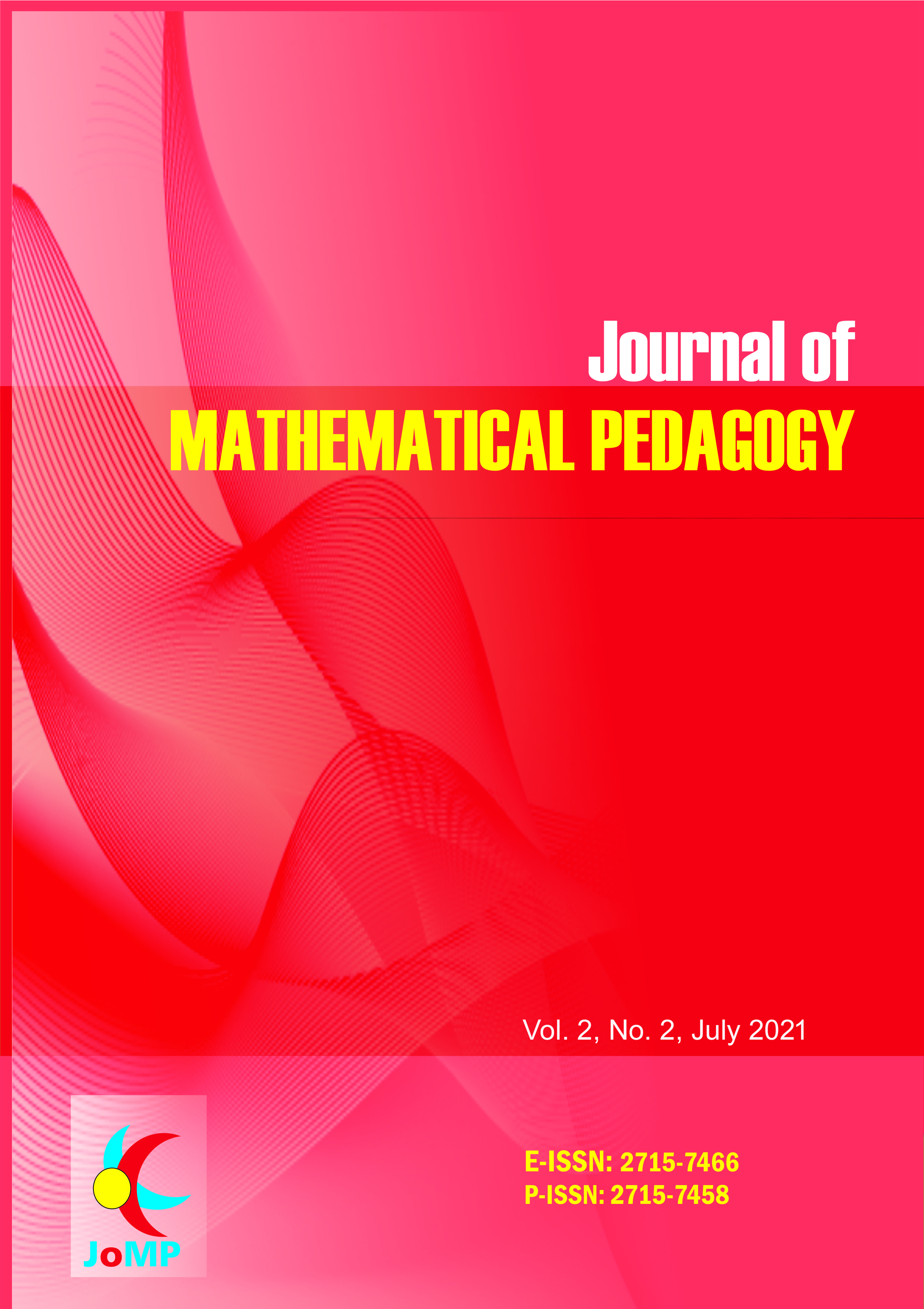Using Story as an Instructional Strategy to Teach Mathematics.
DOI:
https://doi.org/10.26740/jomp.v2n2.p52-58Keywords:
Story, Instruction strategy, Mathematics learningAbstract
Most instruction focuses on procedural learning. Students dont understand why they are doing mathematical procedures and mimicking the teacher. While conceptual learning has been proven to increase student achievement. Story is an instructional strategy that conceptually teaching mathematics. Students become emotional invested and apply their mathematical learning to make predictions.References
Bjork, I. M., & Bowyer-Crane, C. (2013). Cognitive skills used to solve mathematical word problems and numerical operations: A study of 6- to 7-year-old children. European Journal of Psychology of Education, 28(4), 1345-1360. doi:10.1007/s10212-012-0169-7
Bradt, K. M. (1997). Story as a way of knowing. Kansas City, MO: Sheed & Ward.
Branigan, E. (1992). Narrative comprehension and film. New York, NY: Routledge.
Bruner, J. (1996). The culture of education. Cambridge, MA: Harvard University Press.
Byrnes, J. P., & Wasik, B. A. (1991). Role of conceptual knowledge in mathematical procedural learning. Developmental Psychology, 27(5), 777-786.
Engelbrecht, J., Bergsten, C., & Kagesten, O. (2012). Conceptual and procedural approaches to mathematics in the engineering curriculum: Student conceptions and performance. Journal of Engineering Education, 101(1), 138-162.
Griffin, Q. (1988). The effects of self-questioning and story structure training on the reading comprehension of poor readers. Learning Disabilities Research, 4(1), 45-51.
Gunter, G. A., Kenny, R. F., & Junkin, S. (2018). The narrative imperative: Creating a storytelling culture in the classroom. In B. Hokanson, G. Clinton, & K. Kaminski (Eds.), Educational technology and narrative: Story and instructional design (pp. 5-19). Cham, Switzerland: Springer International Publishing AG.
Haven, K. (2007). Story proof: The science behind the startling power of story. Westport, CT: Greenwood Publishing.
Haven, K. (2014). Story smart: Using the science story to persuade, influence, inspire, and teach. Santa Barbara, CA: Library of Congress Cataloging in-Publication Data.
Joersz, J. R. (2017). Changing the way that math is taught: Conceptual versus procedural knowledge. Learning to Teach, 5(1).
Jones, J. C. (2012). Visualizing elementary and middle school mathematics methods. Hoboken, NJ: Wiley.
Junkin, S. F. (2019). Story as an instructional strategy in secondary mathematics: Barriers that prevent its implementation (Doctoral dissertation). Retrieved from ProQuest Dissertations & Theses Global database. (UMI No. 13896147)
McLaren, D. (2010). Does theory have any point? Mathematics in School for Secondary and College Teachers of Mathematics, 39(5), 2-9.
Molina, C. (2014). Teaching mathematics conceptually. SEDL Insights, 1(4), 1-8.
Munakata, M. (2005). Welcome to the math book club: A new approach to integrating mathematics, reading, and writing. Primus: Problems, Resources, and Issues in Mathematics Undergraduate Studies, 15(3), 259-266.
Reys, R. E., Suydam, M. N., & Lindquist, M. M. (1995). Helping children learn mathematics (4th ed.). Needham Heights, MA: Allyn and Bacon.
Rittle-Johnson, B., & Alibali, M. W. (1999). Conceptual and procedural knowledge of mathematics: Does one lead to the other? Journal of Educational Psychology, 91(1), 175-189.
Schank, R. (1990). Every curriculum tells a story. Tech Directions, 62(2), 25-29.
Skoumpourdi, C., & Mpakopoulou, I. (2011). The prints: A picture book for pre-formal geometry. Early Childhood Education Journal, 39, 197-206. doi: 10.1007/s10643-011-0454-0.
Starcic, A. I., Cotic, M., Solomonides, I, & Volk, M. (2016). Engaging preservice primary and preprimary school teachers in digital storytelling for the teaching and learning of mathematics. British Journal of Educational Technology, 47(2), 29-50. doi:10.1111/bjet.12253
Yoe, K. K. (2010). Students difficult in solving non-routine problems. International Journal for Mathematics Teaching and Learning.
Zull, J. (2002). The art of changing the brain: Enriching the practice of teaching by exploring the biology of learning. Sterling, VA: Stylus Publishing.
 Abstract views: 325
,
Abstract views: 325
, PDF Downloads: 235
PDF Downloads: 235





